
Belgium is a country in Europe and member of major international organizations like the European Union and NATO which are both headquartered in Brussels, Belgium.

Baarle-Hertog is a Flemish municipality of Belgium, much of which consists of a number of small Belgian enclaves fully surrounded by the Netherlands.

The Southern Netherlands, also called the Catholic Netherlands, were the parts of the Low Countries belonging to the Holy Roman Empire which were at first largely controlled by Habsburg Spain and later by the Austrian Habsburgs until occupied and annexed by Revolutionary France (1794–1815).

The German-speaking Community also known as East Belgium, is one of the three federal communities of Belgium, with an area of 854 km2 (330 sq mi) in the Liège Province of Wallonia, including nine of the eleven municipalities of Eupen-Malmedy. Traditionally speakers of Limburgish, Ripuarian and Moselle Franconian varieties; the population numbers 77,949 – about 7.0% of Liège Province and about 0.7% of the national total.

The Our is a river in Belgium, Luxembourg and Germany. It is a left-hand tributary of the river Sauer/Sûre. Its total length is 78 kilometres (48 mi).
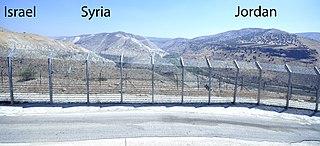
A tripoint, trijunction, triple point, or tri-border area is a geographical point at which the boundaries of three countries or subnational entities meet. There are 175 international tripoints as of 2020. Nearly half are situated in rivers, lakes or seas. On dry land, the exact tripoints may be indicated by markers or pillars, and occasionally by larger monuments.
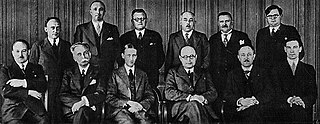
The Belgium–Luxembourg Economic Union, abbreviated to BLEU or UEBL, is an economic union between Belgium and Luxembourg, two countries in the Benelux Union.

An enclave is a territory that is entirely surrounded by the territory of one other state or entity. Enclaves may also exist within territorial waters. Enclave is sometimes used improperly to denote a territory that is only partly surrounded by another state. Vatican City and San Marino, both enclaved by Italy, and Lesotho, enclaved by South Africa, are completely enclaved sovereign states.

There were three Partitions of Luxembourg between 1659 and 1839. Together, the three partitions reduced the territory of the Duchy of Luxembourg from 10,700 km2 (4,100 sq mi) to the present-day area of 2,586 km2 (998 sq mi) over a period of 240 years. The remainder forms parts of modern-day Belgium, France, and Germany.

The Vennbahn is a former railway line that was built partly across what was then German territory by the Prussian state railways. It is now entirely in Belgium, because the trackbed of the line, as well as the stations and other installations, were made provisional Belgian territory in 1919 under an article of the Treaty of Versailles.
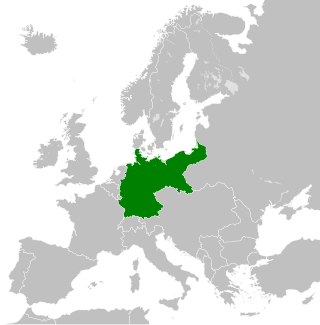
The territorial evolution of Germany in this article include all changes in the modern territory of Germany from its unification making it a country on 1 January 1871 to the present although the history of "Germany" as a territorial polity concept and the history of the ethnic Germans are much longer and much more complex. Modern Germany was formed when the Kingdom of Prussia unified most of the German states, with the exception of multi-ethnic Austria, into the German Empire. After the First World War, on 10 January 1920, Germany lost about 10% of its territory to its neighbours, and the Weimar Republic was formed two days before this war was over. This republic included territories to the east of today's German borders.

The 1996 France – United Kingdom Maritime Delimitation Agreements are two treaties between France and the United Kingdom which establish a number of maritime boundary between French territories and British territories in the Caribbean Sea.
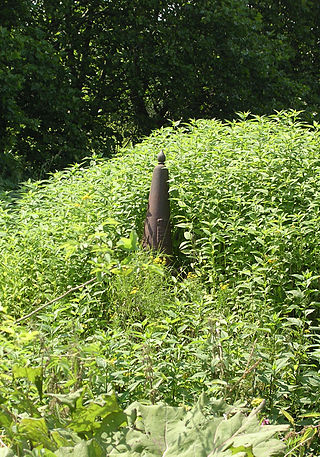
The Belgium–France border, or more commonly the Franco-Belgian border, separates France and Belgium and is 620 km (390 mi) long. Part of it is defined by the Lys river. The western end is at the North Sea. The eastern end is at the Belgium–France–Luxembourg tripoint. The straight distance between these points is 289 km (180 mi).
After the defeat of Nazi Germany in World War II in 1945, Belgium planned to annex parts of the territory along the Belgian–German border. In addition to monetary compensations and the lending of labour forces, this was considered a way of reparations. In mid-April 1949, Belgium surprisingly waived any interest in most of the previously claimed areas.
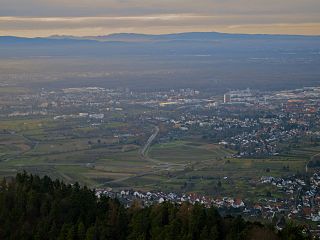
The France–Germany border separates France and Germany and has a length of 450 km (280 mi), about half of it along the Rhine.

The Belgium–Netherlands border separates Belgium and the Netherlands and is 450 km (280 mi) long.

The Germany–Netherlands border consists of a 570-kilometre (350 mi) land and maritime border across the Dollart through the Frisian Islands into the North Sea.

The border between the modern states of Belgium and Germany has a length of 204 km (127 mi).
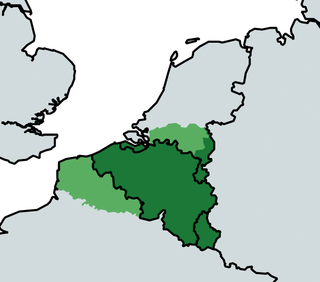
Greater Belgium is a Belgian irredentist concept which lays claim on territory nationalists deem as rightfully Belgian. It usually laid claim to: German territory historically belonging to the former Duchy of Limburg (Eupen-Malmedy), Dutch Limburg, Zeelandic Flanders, and the Grand Duchy of Luxembourg. To a lesser degree, they also claimed the Dutch province of North Brabant and the French Netherlands (Nord-Pas-de-Calais). Shortly after the Belgian Revolution, some groups even proposed a Belgo-Rhine federation. Nowadays, belief in Belgian irredentism is very uncommon and overshadowed by talk of partitioning Belgium or the incorporation of Flanders into the Netherlands.
The France–Luxembourg border stretches 73 kilometers in length, to the northeast of France and to the south of Luxembourg.




















